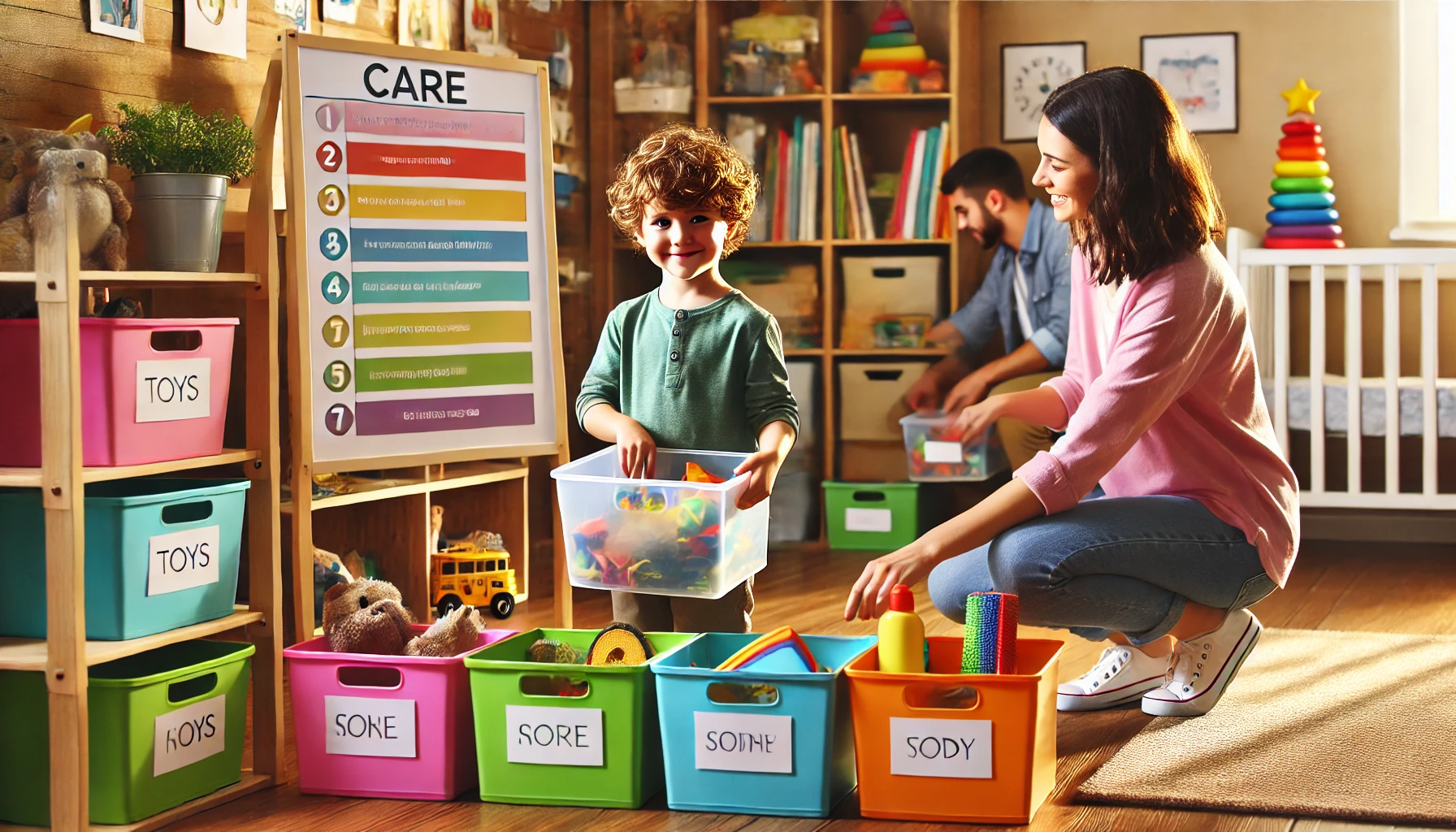How to Teach Young Children About Caring for Their Belongings
Teaching young children to care for their belongings helps them develop responsibility, respect, and appreciation for the things they have. From putting toys away to handling books gently, these small actions build important life skills. With fun routines, visuals, and daily modeling, children can learn that taking care of their things feels good—and shows gratitude for what they own.
Why This Lesson Matters
- Fosters responsibility and independence
- Encourages organization and cleanliness
- Builds respect for personal and shared items
- Teaches gratitude and appreciation
- Prepares children for structured environments like school
1. Explain the Importance of Caring for Things
Start with simple, clear language.
Activity Idea:
Say: “Taking care of your things means keeping them safe, clean, and in the right place.”
Use examples: “We put toys back so we can find them next time.”
Ask: “What happens if we don’t take care of our toys?”
What Kids Learn:
- Meaning of responsibility
- Connection between actions and consequences
- Sense of pride in caring for what’s theirs
2. Create a Fun Clean-Up Routine
Make tidying up playful and predictable.
Activity Idea:
Sing a clean-up song together at the end of playtime.
Use labeled bins or baskets for each type of toy.
Make it a race: “Let’s see how fast we can clean up the books!”
What Kids Learn:
- Organization skills
- Enjoyment in cleaning
- Daily structure
3. Use Visual Aids for Organization
Pictures help children remember.
Activity Idea:
Make picture labels for toy bins, bookshelves, and clothing drawers.
Post a “Care Chart” with steps for cleaning up (e.g., pick up, sort, put away).
Let your child help create the labels to build ownership.
What Kids Learn:
- Independence in tidying
- Matching items to places
- Visual learning reinforcement
4. Practice Gentle Handling of Items
Teach how to treat things with care.
Activity Idea:
Demonstrate how to hold books by the spine or carry toys with two hands.
Say: “We treat our books gently so they last a long time.”
Praise gentle actions: “I saw you turn the page so carefully!”
What Kids Learn:
- Respect for their belongings
- Fine motor control and focus
- Long-term thinking
5. Read Stories That Encourage Responsibility
Books offer relatable examples.
Activity Idea:
Read books like Llama Llama Mess Mess Mess by Anna Dewdney or The Berenstain Bears and the Messy Room by Stan and Jan Berenstain.
Ask: “How did the characters take care of their things?”
Draw a picture of their clean space.
What Kids Learn:
- Real-life examples in story form
- Emotional connection to orderliness
- Modeling behavior from characters
6. Celebrate Clean and Tidy Spaces
Make it rewarding and fun.
Activity Idea:
Take a “before and after” photo of a cleaned space.
Have a small celebration: “Let’s sit and read in our tidy corner!”
Use a sticker chart for consistent efforts.
What Kids Learn:
- Pride in responsibility
- Visual progress
- Motivation through praise
7. Set Realistic Expectations and Be Consistent
Meet children at their level.
Activity Idea:
Give age-appropriate tasks: toddlers can put toys in baskets, older children can help fold laundry.
Remind gently: “Remember, we put things back when we’re done.”
Keep routines steady so children know what’s expected.
What Kids Learn:
- Confidence in doing their part
- Predictable structure
- Positive habits over time
8. Be a Role Model Every Day
Children learn most by watching.
Activity Idea:
Model care for your own things: fold clothes, wipe down counters, treat items with respect.
Narrate: “I’m putting my book back so I can find it later.”
Invite your child to help: “Want to clean our space together?”
What Kids Learn:
- Responsibility is shared
- Adults value their things too
- Positive habits from example
Final Thoughts
Teaching children to care for their belongings is more than a tidy home—it’s about respect, responsibility, and pride in what they have. Through fun routines, storytelling, modeling, and praise, you help your child build lifelong habits of thoughtfulness and organization. These early lessons will serve them well far beyond childhood.
